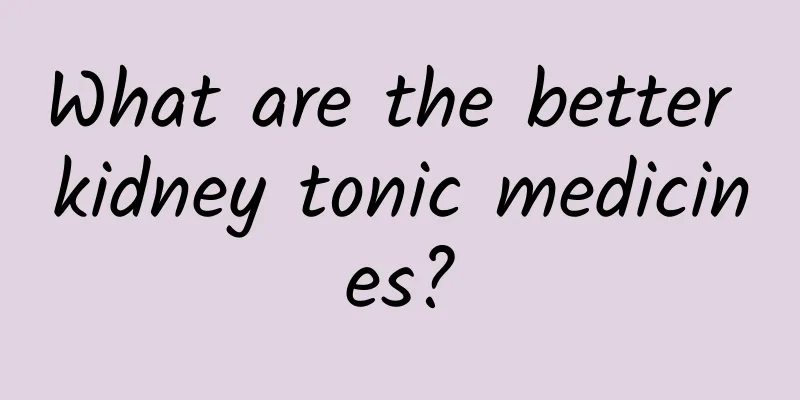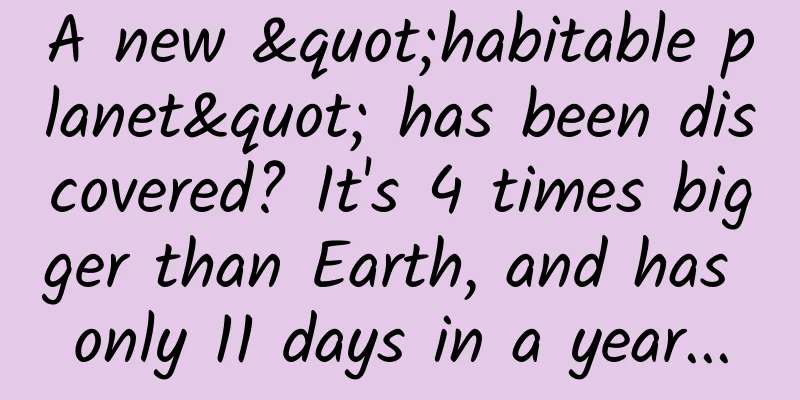Science or witchcraft? Does hypnosis really exist?

|
In movies and TV shows, we often see scenes where people are hypnotized by shaking a pocket watch in front of their eyes or snapping their fingers. The hypnotized person will do whatever they are told to do, just like a puppet, and even their subconscious mind will be manipulated. Image source: pixabay In reality, does such hypnosis exist? Is hypnosis really so mysterious? Let's explore it together~ 01 What is hypnosis? The history of hypnosis is as old as the history of witchcraft, magic, and medicine. The scientific history of hypnosis began in the second half of the 18th century, when the German physician Franz Mesmer used hypnosis to treat patients in Vienna and Paris. But he mistakenly believed that hypnosis tapped into a mysterious force (which he called "animal magnetism") that flowed through the hypnotist into the subject, so he quickly fell into disrepute. Nevertheless, hypnosis attracted the interest of a wide range of doctors. It was not until the mid-19th century that the British physician James Braid studied the phenomenon and coined the term hypnosis, based on the Greek god of sleep, Hypnos. Hypnosis is actually a state of deep relaxation and concentration that is only superficially similar to sleep . People who enter a hypnotic state have a high degree of internal concentration and a decrease in peripheral awareness. Therefore, most people feel calm and relaxed when they are in a hypnotic state. Hypnosis often makes people more receptive to suggestions for behavioral changes and can also help people better cope with anxiety or pain. Image source: Photo Network 02 What is the principle of hypnosis? Brain science research shows that the hypnotic process is accompanied by changes in the internal (self-awareness) and external (environmental awareness) brain networks . Specifically, the Central Executive Network (CEN), Saliency Network (SN) and Default Network (DN) play an important role in entering and maintaining the hypnotic state. The central executive network, salience network, and default network play an important role in hypnosis ACC: anterior cingulate cortex, DLPFC: dorsolateral prefrontal cortex, MPFC: medial prefrontal cortex, PCC: posterior cingulate cortex, PPC: posterior parietal cortex Image source: Reference [2] Hypnosis requires entering a state of deep involvement and, under the guidance of a hypnotist, experiencing changes in perception, thinking, memory, and behavior . During hypnosis, mental images are generated and maintained , such as the appearance of familiar faces, the layout of a room, the scene of a graduation ceremony, or even "hearing" the uplifting first chord of Beethoven's Fifth Symphony in the mind, or recalling the taste of fresh strawberries or the feeling of cotton gently rubbing against the cheek. These all require the involvement of the central executive network and the default network. During hypnosis, it is also necessary to integrate internal and external signals to control behavior , which is related to the salience network. At the same time, the salience network will also regulate the activities of the central executive network and the default network based on behavior. Image source: Photo Network 03 Does hypnosis work for everyone? There are three main types of hypnosis: guided hypnosis, hypnotherapy and self-hypnosis . - Guided Hypnosis Guided hypnosis uses tools such as recorded instructions and music to induce a hypnotic state and is often used by online sites and mobile apps. - Hypnotherapy Hypnotherapy is usually performed under the guidance of a licensed hypnotherapist or hypnotist, who uses deep relaxation techniques, verbal repetition, mental imagery and suggestion to help a person change their thought process and mindset, helping to treat conditions such as depression, anxiety, post-traumatic stress disorder (PTSD) and eating disorders. -Self-hypnosis Self-hypnosis is the process that occurs when a person self-induces a hypnotic state and is often used as a self-help tool for controlling pain or managing stress. Image source: Photo Network However, not everyone is easily hypnotized . Studies have shown that 10% to 15% of people are very sensitive to hypnosis (highly hypnotizable individuals), while 10% are difficult or impossible to hypnotize (non-hypnotizable individuals). Brain science studies have shown that the rostral part of the corpus callosum of highly hypnotizable subjects is 32% larger than that of non-hypnotizable subjects . This area is involved in the allocation of attention and information transfer between the prefrontal cortex. This suggests that highly hypnotizable subjects have a more effective frontal lobe attention system that can focus attention and suppress unwanted peripheral stimuli in consciousness. Corpus callosum Image source: Zhihu - Psychology 04 Is hypnosis really that magical? Myth 1: When you are hypnotized, you lose consciousness or memory. Fact : Most people remember everything that happened during hypnosis. You still know who you are, where you are, and remember what happened during the hypnosis session. Myth 2: When you are hypnotized, you are under the control of the hypnotherapist. Truth : Hypnosis is something you do for yourself. You cannot be forced to do anything against your will, nor will it reveal any information you wish to keep private. You do not lose control of your actions. Hypnosis simply makes you more receptive to certain experiences, but it does not force you to have them. Myth 3: Hypnosis is just deep sleep. Truth : Hypnosis is not sleeping. Some deeper forms of hypnosis may make it look like you are asleep because your body is very quiet, but you are not asleep. Image source: Photo Network Hypnosis is not as magical as it is shown in the movies. In real life, it has a wide range of positive applications. For example, doctors and psychologists use hypnosis to treat depression, anxiety, eating disorders, sleep disorders, compulsive gambling, phobias, and PTSD. Hypnosis can also be used for analgesia, including relieving symptoms related to irritable bowel syndrome (IBS), controlling pain during dental surgery, treating chronic pain diseases (such as rheumatoid arthritis), and relieving pain during childbirth. Hypnosis is also used to help people change their behavior, such as quitting smoking, losing weight, or preventing bedwetting. In short, those magical hypnosis methods in movies and TV dramas are just for fun, don’t take them seriously~ References [1] Horton, JE, Crawford, HJ, Gregory, H., & Hunter, DJ (2004). Increased anterior corpus callosum size associated positively with hypnotizability and the ability to control pain. Brain(8), 1741-1747. [2] Landry, M., Lifshitz, M., & Raz, A. (2017). Brain correlates of hypnosis: A systematic review and meta-analytic exploration. Neuroscience & Biobehavioral Reviews, 81, 75–98. [3] Jensen, MP, Jamieson, GA, Antoine, L., Giuliana, M., Mcgeown, WJ, & Santarcangelo, EL, et al. (2017). New directions in hypnosis research: strategies for advancing the cognitive and clinical neuroscience of hypnosis. Neuroscience of Consciousness, 3(1). [4] Landolt, AS, & Milling, LS (2011). The efficacy of hypnosis as an intervention for labor and delivery pain: a comprehensive methodological review. Clin Psychol Rev, 31(6), 1022-1031. [5] Jensen, MP, & Patterson, DR (2016). Hypnotic approaches for chronic pain management clinical implications of recent research findings. American Psychologist, 69(2), 167. Author: Wang Ye, Institute of Brain Science and Intelligent Media, Communication University of China Editor: Tinker Bell Title image source: pixabay |
<<: Economy in physics: What is the principle of least action?
>>: Does one side of your face really age faster than the other after a few years of driving?
Recommend
What is the medicinal value of castor seeds
Castor seeds are a very good Chinese medicinal ma...
These Winter Olympics events are most prone to injuries! How to prevent them?
As the opening of the Beijing Winter Olympics dra...
When you drink tea bags, drip coffee, or chew gum, you are probably also eating plastic.
Do you know how much plastic there is in our live...
How to take Astragalus
Astragalus is a kind of Chinese medicinal materia...
The efficacy and function of sunflower
There are many types of Chinese medicine. When we...
Beware! Be careful when you have "red eyes" like this! Severe cases may cause blindness...
Expert in this article: Dr. Tian Jing, attending ...
CPG: 2017 Payment Strategy Survey Report
199IT original compilation CPG has released its 2...
The efficacy and function of saw shark gall
As the pressure of modern life increases, more an...
If one person is infected, the whole family needs to be treated! Zhang Wenhong: If we eat like this at home, we will see germs everywhere!
If one person is infected, the whole family must ...
The efficacy and function of Salicynum root
What are the functions of Salicylus root? As a tr...
The efficacy and function of Fengyan fruit shell
With the development of society and the close int...
The efficacy and function of pomegranate flowers
Many people are not very clear about the efficacy...
The efficacy and function of Puqi Fritillaria
As the pressure of modern life increases, more an...
Can motherwort shrink the vagina?
Most female friends feel that their vulva is a li...
The efficacy and function of Misui grass
Not only can Mihui grass supplement the human bod...









